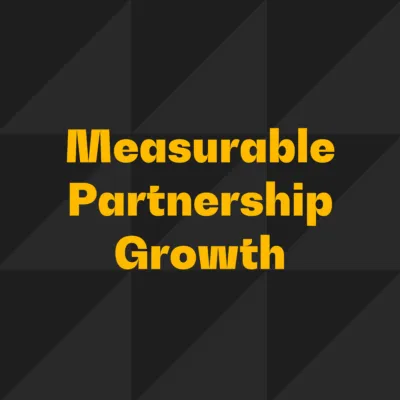Mastercard’s Raja Rajamannar joined the Brand Builder’s Playbook to talk about the topic every CMO claims to want, and many still struggle to nail: brand ROI. This is not another lecture about “measurement culture.” It is a reminder that brand is finance, and that you earn the right to invest by speaking in the metrics your CFO cares about, consistently, calmly, and with receipts.
Raja’s track record sets the stage. Since he took the CMO seat, Mastercard’s market cap has multiplied, the brand has expanded from “cards” to a diversified set of data, security, and services, and the marketing team can explain its contribution without resorting to soft proxies. That last part matters most. As he put it, “If I give marketing ten million dollars, I need to know what comes back.” Your CFO is thinking the same thing.
The operating system: three questions that gate every dollar
Raja’s framework is simple enough to teach, and strong enough to stand up in a boardroom. Every program must answer three questions:
- Does it strengthen the brand on attributes we actually care about, with proof that those attributes move?
- Does it advance the business, through new account growth, cross-sell, retention, or margin?
- Does it build a durable advantage that compounds–not a one-off blip?
That is the bar. Not “brand lift,” not “social buzz,” not just incrementality. Brand health, commercial impact, sustained edge.
Notice the order. Brand strength comes first, business impact second, durability third, yet all three are required. It is a portfolio test, and if you fail any one item the money goes somewhere else.
Speak finance, earn trust
When the CFO criticized marketing spend and dismissed “brand” as wasteful, Raja pointed to her Cartier watch and compared it to a cheaper Casio that functionally does more by telling time, calculating, and storing contacts. The only reason someone would spend thousands more on the Cartier is brand value.
His point was that brand is what justifies premium pricing, loyalty, and long-term profitability. It’s the intangible equity that turns a functional product into a desired one. It reframed marketing as a value creator rather than a cost center, helping him build alignment and trust with finance leadership.
Mastercard put a finance leader on marketing’s staff, co-reporting to the CMO and CFO, then built joint dashboards. The outputs are plain: weekly or campaign-level market-mix reads, rigorous regression to separate environment from effect, and a clean line from spend to acquisition, usage, revenue, and margin. Put differently, marketing stopped asking to be believed, and started showing what happened. “You need to connect the dots between investment and outcomes in a credible, believable fashion,” said Raja.
Brand and performance are not rivals
We say this a lot because it keeps being ignored. Performance marketing that is cut off from brand becomes a treadmill of diminishing returns. Brand work that never touches conversion becomes a cost center. Raja treats them as one system, with different time constants.
Brand reputation and risk move fast. Mastercard monitors that in real time, so spikes from a crisis, or a tent-pole like Formula 1, show up immediately. Broader brand image and affinity move slower, so they are read quarterly, with hard annual targets. On the performance side, B2B plays like Money20/20 are instrumented end-to-end, from marketing-qualified lead to close, with lifetime value baked in. Consumer acceptance programs tie spend lift to the specific infrastructure bet that enabled it. Same rigor, different clocks.
As he put it: “Brand decline can happen in an instant.” Treat it with the same vigilance you bring to revenue.
What to do in a downturn
You do not sell harder when your customers are cutting budgets. You serve. That was Mastercard’s stance through the pandemic. With partners, it meant restructuring sponsorships so organizations could keep teams intact, then rebuilding together. With clients, it meant flexibility, shared assets, and real help. With consumers, it meant useful solutions, not more noise.
The result was not just goodwill. It was memory, preference, and better economics when demand returned. If your playbook in tough times starts with promotions and ends with fewer fans, you paid twice.
Purpose that pays its own way
Brand purpose is only polarizing when it is performative or detached from the business. When it is built like a product, measured like a program, and repeated until it compounds, it drives growth.
Mastercard’s long-running Stand Up To Cancer partnership is a clear example. The mechanic is simple: during a defined window, when you pay at a category like restaurants with a Mastercard, the company donates a portion of its profit on that transaction. The consumer’s price does not change. The brand funds real research, tells the story at scale, and measures what happens.
What happens is repeatable lift. During the window, category spend with Mastercard outruns the market. After the window, share settles above baseline. The post-period delta pays back the donation inside the fiscal year, and the brand earns lasting affinity for doing work that matters. “Purpose and profits are not mutually exclusive,” Raja said. The proof is in the curve, not the case study.
How to run the boardroom, not from it
Most boards are light on marketing experience, and heavy on opinions. Educate, do not placate. Build time into meetings to demo work, not just present it. Ask and answer the questions that signal you own the full equation.
A few that landed in this episode:
- Are we trusted more than our direct and emerging competitors, among the audiences that will decide our future?
- Are Gen Z, millennials, and Gen Alpha seeing the brand as modern, useful, and worth their time?
- As our offer expands into data, loyalty, fraud, and cybersecurity, is brand familiarity growing with the decision makers who buy those services?
If you cannot show movement on those fronts, and tie it to revenue, you are not under-understood, you are under-managed.




